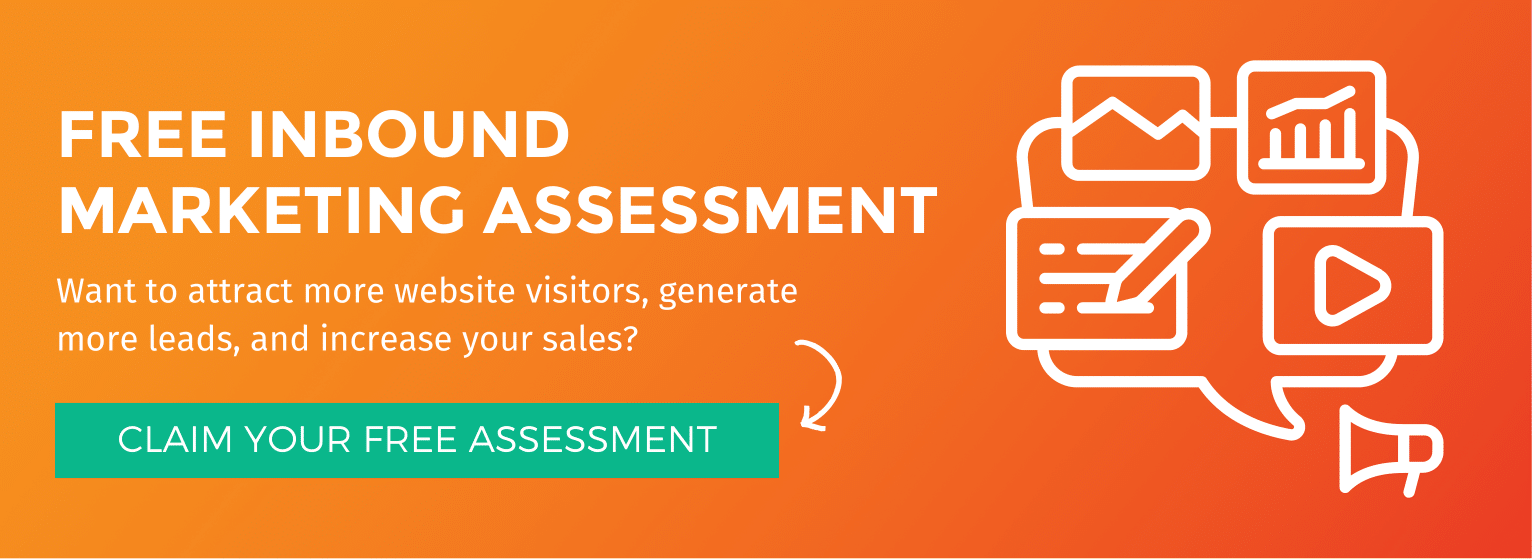How To Use Content Marketing To Elevate & Grow Your Business
by Shirley Gibbins on 16-Aug-2023 13:00:00

Content marketing is an essential digital tool for small business owners looking to boost their business recognition and credibility online, drive website traffic, keep visitors on your website long enough to make a sales enquiry and, ultimately, purchase your products or services.
What Is The Idea Behind Content Writing?
The core idea behind content marketing is deceptively straightforward. By creating and publishing engaging content tailored to the pain points and purchase motivations of your target audience, you can ‘nurture’ casual visitors into loyal customers and advocates, improve your search engine visibility, and grow your sales revenues. The ‘how to’ of content marketing is also straightforward. Most content takes the form of written blog articles, web content, downloadable incentive content (e.g. guides/white papers), as well as some videos and infographics.
However, for content marketing to successfully elevate and grow your business, you’ll need a strategic approach that goes beyond simply typing out the occasional blog post here and there. In this short guide, we will explain how businesses can leverage content marketing in the right way to increase brand awareness and better engage their customers.
What Makes ‘Content’ Into Marketing Content?
As a writer, ‘content’ is a horrible, faceless term, essentially denoting any digital collateral used by a business as part of its digital marketing strategy. And unfortunately for many businesses, content is all that this material is – poorly thought-out filler used to fill space on the website and blog, with little more marketing value than lorem ipsum text.
Content marketing is a different proposition entirely. For written or visual content to have genuine use as a marketing tool, it must have real-world value and relevance to your target readers, in a way that encourages them to take action and engage more closely with your business. A content marketing strategy develops a portfolio of engaging and entertaining digital content assets, which are disseminated for free, to a tightly defined audience or ‘buyer persona’.
Why Bother With Content Marketing?
The purpose of sharing this content is to inform, educate, and eventually persuade your audience to progress their buyer journey from awareness through consideration to decision, via intermediary steps such as signing up for a newsletter, making a purchase, or connecting with your business on social media. In doing so, you’ll establish stronger brand authority in your sector, keep customers informed about industry trends, and showcase your business's unique value propositions.
However, no matter how much the end goal of content marketing is to achieve results for your business, the focus of all your marketing content should be the customer, not your business. Content marketing makes sales indirectly, not directly, by gradually developing a value proposition around your business and its service credentials. In fact, in an ideal content marketing scenario, your sales team won’t need to make any cold approaches at all. The customer will make all the moves, right up to contacting you to make the purchase.
Checklist For Developing A Successful Content Marketing Campaign
- Identify your target buyer personas and plan content that addresses their specific needs and desires at each stage of the buyer journey.
- Establish a content marketing calendar to plan and remain consistent with content production.
- Create a variety of written and visual content formats, such as SEO-optimised long-form and short-form articles, keyword-specific landing pages, social media updates, e-books, product demonstration videos etc.
- Incorporate storytelling elements and social proof into your content to engage readers and set your brand apart from your competitors. Personalise your content with real-world examples to give it human context.
- Keep your brand voice informative and persuasive, using industry-specific terms and structuring content with bullet points and H2 headings to make it quick and easy to read.
- Share your content across various social media platforms, such as Facebook, Twitter, LinkedIn, and Instagram.
- Engage with your audience by responding to comments and messages, and by asking for feedback or user-generated content.
- Use key performance indicators (KPIs) such as website traffic and leads generated to measure the effectiveness of each content asset and your overall strategy.
- Utilise web analytics tools to track user behaviour and identify content that performs well.
Next Steps
For further advice about content marketing and how to use your content assets successfully to drive sales for your business, please contact JDR Group today or download our free Content Marketing guide for more information.
Image Source: Canva
- Inbound Marketing (SEO, PPC, Social Media, Video) (824)
- Strategy (363)
- Sales & CRM (195)
- Marketing Automation & Email Marketing (190)
- Business Growth (164)
- Website Design (160)
- Hubspot (138)
- Lead Generation (115)
- Google Adwords (98)
- Content Marketing (94)
- Conversion (48)
- Case Studies (47)
- News (47)
- Ecommerce (39)
- Webinars (34)
- SEO (24)
- AI (20)
- Events (19)
- Video (17)
- LinkedIn Advertising (15)
- Video Selling (15)
- Software training (13)
- Niche business marketing (11)
- The Digital Prosperity Podcast (10)
- Facebook Advertising (6)
- HubSpot Case Studies (5)
- December 2025 (10)
- November 2025 (6)
- October 2025 (17)
- September 2025 (16)
- August 2025 (14)
- July 2025 (14)
- June 2025 (5)
- May 2025 (19)
- April 2025 (15)
- March 2025 (13)
- February 2025 (13)
- January 2025 (8)
- December 2024 (2)
- November 2024 (4)
- October 2024 (21)
- September 2024 (4)
- August 2024 (8)
- July 2024 (14)
- June 2024 (16)
- May 2024 (25)
- April 2024 (15)
- March 2024 (18)
- February 2024 (5)
- January 2024 (10)
- December 2023 (6)
- November 2023 (10)
- October 2023 (13)
- September 2023 (12)
- August 2023 (14)
- July 2023 (13)
- June 2023 (14)
- May 2023 (15)
- April 2023 (13)
- March 2023 (14)
- February 2023 (13)
- January 2023 (15)
- December 2022 (13)
- November 2022 (6)
- October 2022 (8)
- September 2022 (22)
- August 2022 (15)
- July 2022 (13)
- June 2022 (16)
- May 2022 (14)
- April 2022 (16)
- March 2022 (17)
- February 2022 (11)
- January 2022 (8)
- December 2021 (6)
- November 2021 (7)
- October 2021 (11)
- September 2021 (10)
- August 2021 (7)
- July 2021 (7)
- June 2021 (4)
- May 2021 (4)
- April 2021 (1)
- March 2021 (3)
- February 2021 (5)
- January 2021 (4)
- December 2020 (7)
- November 2020 (6)
- October 2020 (5)
- September 2020 (9)
- August 2020 (18)
- July 2020 (17)
- June 2020 (17)
- May 2020 (10)
- April 2020 (21)
- March 2020 (24)
- February 2020 (21)
- January 2020 (12)
- December 2019 (23)
- November 2019 (12)
- October 2019 (14)
- September 2019 (16)
- August 2019 (15)
- July 2019 (13)
- June 2019 (6)
- May 2019 (8)
- April 2019 (4)
- March 2019 (2)
- February 2019 (2)
- January 2019 (2)
- December 2018 (3)
- November 2018 (24)
- September 2018 (11)
- August 2018 (9)
- June 2018 (3)
- May 2018 (6)
- April 2018 (14)
- March 2018 (12)
- February 2018 (16)
- January 2018 (15)
- December 2017 (15)
- November 2017 (18)
- October 2017 (23)
- September 2017 (19)
- August 2017 (28)
- July 2017 (27)
- June 2017 (25)
- May 2017 (18)
- April 2017 (17)
- March 2017 (16)
- February 2017 (17)
- January 2017 (14)
- December 2016 (21)
- November 2016 (27)
- October 2016 (25)
- September 2016 (16)
- August 2016 (20)
- July 2016 (19)
- June 2016 (14)
- May 2016 (20)
- April 2016 (24)
- March 2016 (22)
- February 2016 (28)
- January 2016 (27)
- December 2015 (28)
- November 2015 (19)
- October 2015 (9)
- September 2015 (12)
- August 2015 (5)
- July 2015 (1)
- June 2015 (10)
- May 2015 (3)
- April 2015 (11)
- March 2015 (14)
- February 2015 (15)
- January 2015 (12)
- December 2014 (2)
- November 2014 (23)
- October 2014 (2)
- September 2014 (2)
- August 2014 (2)
- July 2014 (2)
- June 2014 (7)
- May 2014 (14)
- April 2014 (14)
- March 2014 (7)
- February 2014 (2)
- January 2014 (7)
- December 2013 (9)
- November 2013 (14)
- October 2013 (17)
- September 2013 (3)
- August 2013 (6)
- July 2013 (8)
- June 2013 (4)
- May 2013 (3)
- April 2013 (6)
- March 2013 (6)
- February 2013 (7)
- January 2013 (5)
- December 2012 (3)
- November 2012 (2)
- September 2012 (1)
Subscribe by email
You May Also Like
These Related Blogs

Is Facebook Still An Important Marketing Tool?
Facebook has been the subject of some huge controversies during the last few years, so you may be wondering whether it's still worth using as a digita …

Inbound Marketing: The Game Changer For UK SMEs
Every business is unique, and so are their marketing needs. While traditional ‘outbound’ marketing tactics such as cold calling and interruption adver …

Target Audience Vs Buyer Persona
What Is A Target Market? Traditionally, when business owners come to research their customer base, the typical term used is “Target Audience.” It's im …




